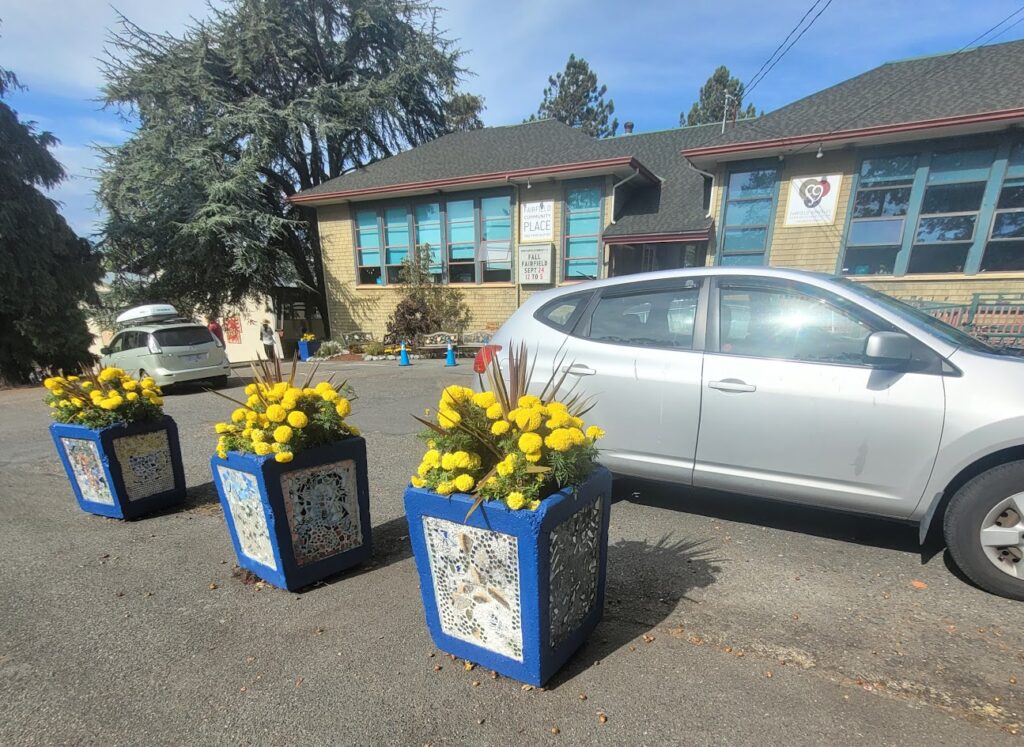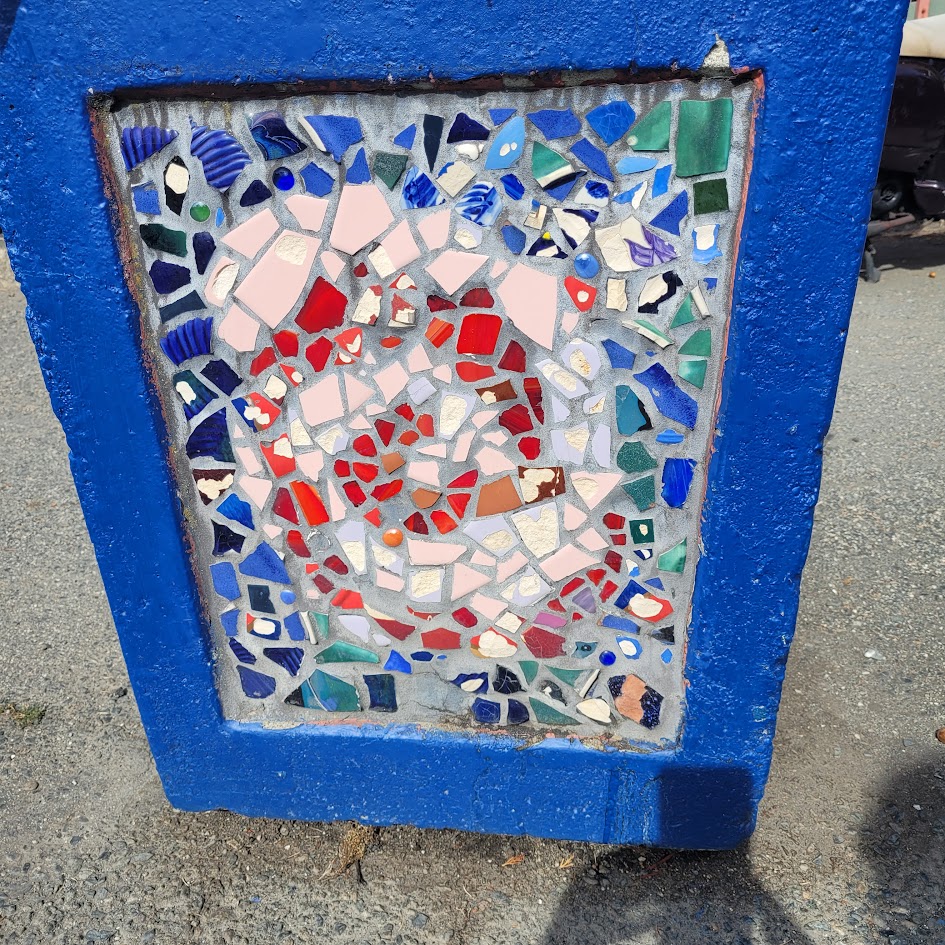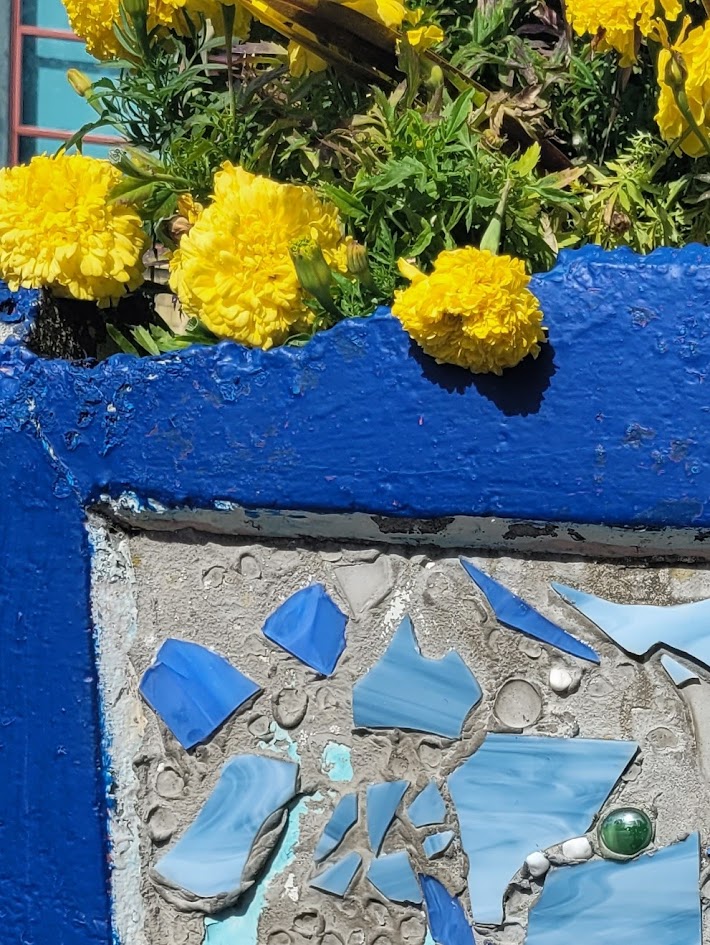
I visited the site of a community art project that I was part of creating many years ago – a series of mosaics decorating several large concrete planters outside the Fairfield Community Place. I thought it would be interesting to go back there and see how the mosaics had withstood the test of time, and to reflect on this project now through the lens of art education. I took a series of photographs and tried my best to recall what I could about the project.

It’s been about 20 years, so some details are fuzzy in my mind, just as many of the mosaics themselves have begun to deteriorate and chip away. However, I do remember that the original vision was to engage the older children in our after school care program in creating artful mosaics that represented aspects of the neighborhood. To beautify the space, collaborate with community members, and invite our youth to feel empowered in making positive changes in the world around them. Mosaic art fit well with the themes of recycling and reusing items as a way to further incorporate values of the local community. The youth sketched design ideas for the artwork as we discussed what being part of the Fairfield community meant to them.

This project allowed for positive community engagement, connection and collaboration through an art based activity. There was the educational opportunity for youth and others involved to learn the basics of mosaic art and the creative design process fostered reflection, communication and cooperation. The act of beautifying a community space together through the creation of art was memorable and empowering for all involved. The nature of the project was such that we worked on it for several days, outside, with many people coming and going who were curious and interested in what we were doing, so there was additional engagement occurred with the larger community in a natural way. The location at the front main parking lot is a high traffic area, so much interest and spontaneous conversation was sparked by passers-by as we worked.

Visiting the site now, so many years later, I regret that we did not do a better job of documenting our process and intentions somehow – there is no plaque or information board, and my internet searches came up with nothing. It is likely alive now only in the memories of folks who were part of it at the time, with perhaps a few photographs out there somewhere. I’m sure it was an impactful experience for the children who participated in it, and I can imagine how special it would feel to them to be able to see the physical work of art that they helped create existing in a public space over many years. But I wonder now, what were the stories they were trying to tell? Was a flower simply a flower, or did it have a further connection to a specific garden?

How different would the impact be if, like in an art gallery, these artworks were accompanied by an artist statement or the context provided by a curator. These artworks exist now as historical archives shrouded in mystery, as the Community Place staff have come and gone over years and the story of this projects creation has mostly faded away. However, this absence leaves room for each viewer to make their own meaning of it, to imagine and hopefully create their own story.

This kind of community based art education activity could be taken to another level of intentional activism, empowerment, or community building, for example: bringing diverse populations together to collaborate with specific goals or themes in mind; creating mosaics or workshopping different issues as the subject of the art itself; intentionally involving the wider community in a more thoughtfully interactive way. Even the conversations and connections that would naturally arise could be quite powerful and spark further change or action. Art can be a subtle yet powerful tool of transformation, interconnection, positivity, and hope.
